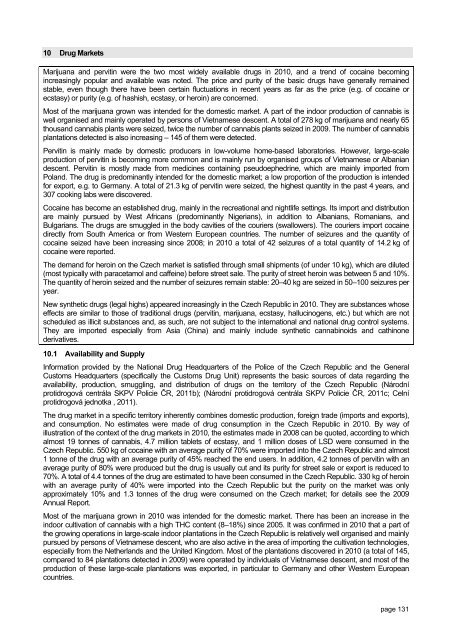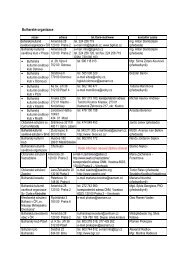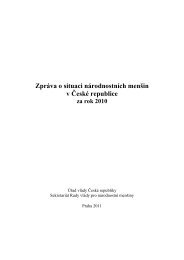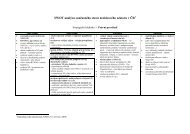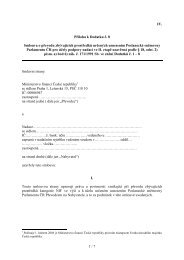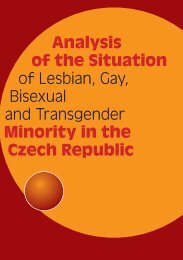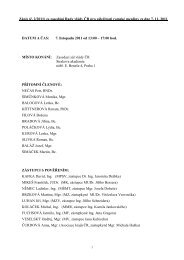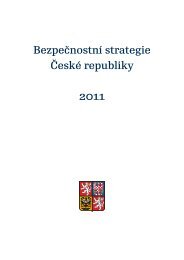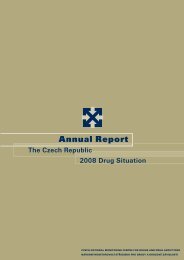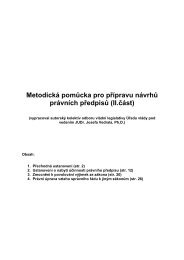The Czech Republic Annual Report 2010 Drug ... - Drogy-info.cz
The Czech Republic Annual Report 2010 Drug ... - Drogy-info.cz
The Czech Republic Annual Report 2010 Drug ... - Drogy-info.cz
Create successful ePaper yourself
Turn your PDF publications into a flip-book with our unique Google optimized e-Paper software.
10 <strong>Drug</strong> Markets<br />
Marijuana and pervitin were the two most widely available drugs in <strong>2010</strong>, and a trend of cocaine becoming<br />
increasingly popular and available was noted. <strong>The</strong> price and purity of the basic drugs have generally remained<br />
stable, even though there have been certain fluctuations in recent years as far as the price (e.g. of cocaine or<br />
ecstasy) or purity (e.g. of hashish, ecstasy, or heroin) are concerned.<br />
Most of the marijuana grown was intended for the domestic market. A part of the indoor production of cannabis is<br />
well organised and mainly operated by persons of Vietnamese descent. A total of 278 kg of marijuana and nearly 65<br />
thousand cannabis plants were seized, twice the number of cannabis plants seized in 2009. <strong>The</strong> number of cannabis<br />
plantations detected is also increasing – 145 of them were detected.<br />
Pervitin is mainly made by domestic producers in low-volume home-based laboratories. However, large-scale<br />
production of pervitin is becoming more common and is mainly run by organised groups of Vietnamese or Albanian<br />
descent. Pervitin is mostly made from medicines containing pseudoephedrine, which are mainly imported from<br />
Poland. <strong>The</strong> drug is predominantly intended for the domestic market; a low proportion of the production is intended<br />
for export, e.g. to Germany. A total of 21.3 kg of pervitin were seized, the highest quantity in the past 4 years, and<br />
307 cooking labs were discovered.<br />
Cocaine has become an established drug, mainly in the recreational and nightlife settings. Its import and distribution<br />
are mainly pursued by West Africans (predominantly Nigerians), in addition to Albanians, Romanians, and<br />
Bulgarians. <strong>The</strong> drugs are smuggled in the body cavities of the couriers (swallowers). <strong>The</strong> couriers import cocaine<br />
directly from South America or from Western European countries. <strong>The</strong> number of seizures and the quantity of<br />
cocaine seized have been increasing since 2008; in <strong>2010</strong> a total of 42 seizures of a total quantity of 14.2 kg of<br />
cocaine were reported.<br />
<strong>The</strong> demand for heroin on the <strong>Czech</strong> market is satisfied through small shipments (of under 10 kg), which are diluted<br />
(most typically with paracetamol and caffeine) before street sale. <strong>The</strong> purity of street heroin was between 5 and 10%.<br />
<strong>The</strong> quantity of heroin seized and the number of seizures remain stable: 20–40 kg are seized in 50–100 seizures per<br />
year.<br />
New synthetic drugs (legal highs) appeared increasingly in the <strong>Czech</strong> <strong>Republic</strong> in <strong>2010</strong>. <strong>The</strong>y are substances whose<br />
effects are similar to those of traditional drugs (pervitin, marijuana, ecstasy, hallucinogens, etc.) but which are not<br />
scheduled as illicit substances and, as such, are not subject to the international and national drug control systems.<br />
<strong>The</strong>y are imported especially from Asia (China) and mainly include synthetic cannabinoids and cathinone<br />
derivatives.<br />
10.1 Availability and Supply<br />
Information provided by the National <strong>Drug</strong> Headquarters of the Police of the <strong>Czech</strong> <strong>Republic</strong> and the General<br />
Customs Headquarters (specifically the Customs <strong>Drug</strong> Unit) represents the basic sources of data regarding the<br />
availability, production, smuggling, and distribution of drugs on the territory of the <strong>Czech</strong> <strong>Republic</strong> (Národní<br />
protidrogová centrála SKPV Policie ČR, 2011b); (Národní protidrogová centrála SKPV Policie ČR, 2011c; Celní<br />
protidrogová jednotka , 2011).<br />
<strong>The</strong> drug market in a specific territory inherently combines domestic production, foreign trade (imports and exports),<br />
and consumption. No estimates were made of drug consumption in the <strong>Czech</strong> <strong>Republic</strong> in <strong>2010</strong>. By way of<br />
illustration of the context of the drug markets in <strong>2010</strong>, the estimates made in 2008 can be quoted, according to which<br />
almost 19 tonnes of cannabis, 4.7 million tablets of ecstasy, and 1 million doses of LSD were consumed in the<br />
<strong>Czech</strong> <strong>Republic</strong>. 550 kg of cocaine with an average purity of 70% were imported into the <strong>Czech</strong> <strong>Republic</strong> and almost<br />
1 tonne of the drug with an average purity of 45% reached the end users. In addition, 4.2 tonnes of pervitin with an<br />
average purity of 80% were produced but the drug is usually cut and its purity for street sale or export is reduced to<br />
70%. A total of 4.4 tonnes of the drug are estimated to have been consumed in the <strong>Czech</strong> <strong>Republic</strong>. 330 kg of heroin<br />
with an average purity of 40% were imported into the <strong>Czech</strong> <strong>Republic</strong> but the purity on the market was only<br />
approximately 10% and 1.3 tonnes of the drug were consumed on the <strong>Czech</strong> market; for details see the 2009<br />
<strong>Annual</strong> <strong>Report</strong>.<br />
Most of the marijuana grown in <strong>2010</strong> was intended for the domestic market. <strong>The</strong>re has been an increase in the<br />
indoor cultivation of cannabis with a high THC content (8–18%) since 2005. It was confirmed in <strong>2010</strong> that a part of<br />
the growing operations in large-scale indoor plantations in the <strong>Czech</strong> <strong>Republic</strong> is relatively well organised and mainly<br />
pursued by persons of Vietnamese descent, who are also active in the area of importing the cultivation technologies,<br />
especially from the Netherlands and the United Kingdom. Most of the plantations discovered in <strong>2010</strong> (a total of 145,<br />
compared to 84 plantations detected in 2009) were operated by individuals of Vietnamese descent, and most of the<br />
production of these large-scale plantations was exported, in particular to Germany and other Western European<br />
countries.<br />
page 131


